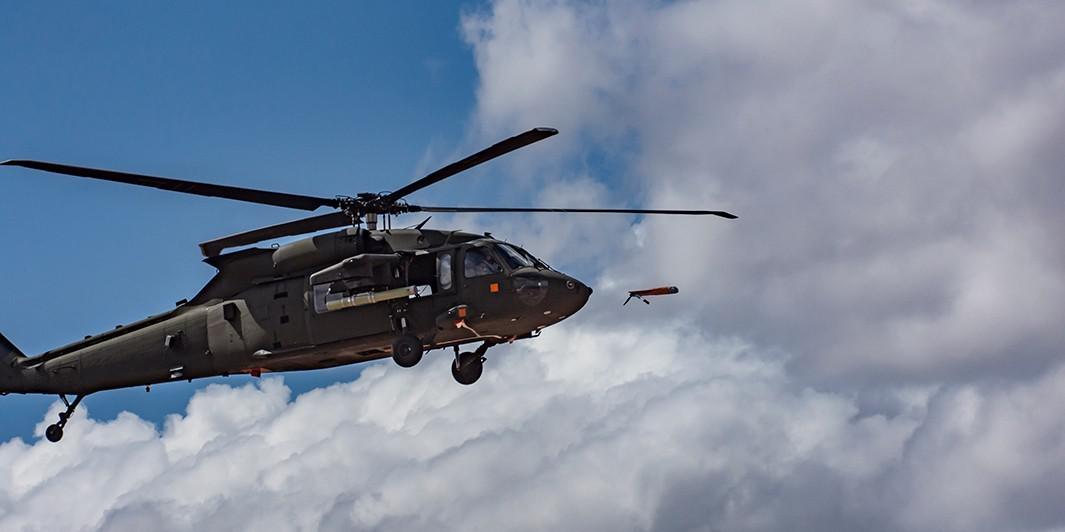Artificial Intelligence Helps Define Army’s Future
Artificial intelligence technology tested during the Army’s Project Convergence exercise largely met expectations and will help transform the way the Army fights in the future, officials say.
Army officials held a media roundtable September 23 to discuss lessons learned during the recently completed Project Convergence, which is designed to ensure the Army, as part of the joint force, can rapidly and continuously converge effects across all domains—air, land, maritime, space and cyberspace—to overmatch adversaries in both competition and actual conflict. A key part of the Army’s massive modernization effort, the project focuses on people, weapons systems, information, command and control, and terrain to assess areas of advancement and identify areas for improvement.
Artificial intelligence, or AI, played a role, along with autonomy and robotics, which Gen. John Murray, USA, commanding general, Army Futures Command, describes as three key technologies for the Army’s future. Gen. Murray compares the trio of technological capabilities to those that gave the Germans an initial advantage during World War II. “Everybody had tanks, airplanes and radios, but the Germans figured out how to combine those technologies in a new and unique way that gave them a distinct operational and tactical advantage,” Gen. Murray told reporters.
He added, however, that it’s not just the technologies. “The technologies are interesting, but that intersection of the technologies and how you employ them in new and different ways is really the most critical thing. The technologies are good, but this is about how we’ll fight, how we’ll organize and how we’ll effectively employ those technologies better than any opponent.”
Artificial intelligence played multiple roles during the six-week exercise at Yuma Proving Ground, Arizona, Brig. Gen. Ross Coffman, USA, director of the Next Generation Combat Vehicle Cross Functional Team, explained. “We used ground robots paired with small UAVs [unmanned aerial vehicles] to digitally map and transmit that map over the network so that it could be aggregated and then sent across the force. We used artificial intelligence to autonomously conduct a ground reconnaissance, employ sensors and then pass that information back. We used artificial intelligence in [air defense artillery] target recognition, and machine learning to train algorithms on various types of enemy forces.”
Firestorm is one of the systems that took center stage during the exercise. It combines situational awareness data on both enemy and friendly forces with early warning and targeting capabilities. “Enemy targets were identified on the battlefield, Firestorm quickly paired those targets with the best shooter in position to put effects on it,” Gen. Coffman said. “This is happening faster than any human can execute. It is absolutely an amazing technology that … will fundamentally change the way we fight in the future.”
Gen. Coffman describes Firestorm as a “computer brain” that “recommends the best shooter” and “missions the effectors that we want to eradicate the enemy on the battlefield.” The officials noted that Firestorm is programmed to choose shooters that do not interfere with the airspace, so it is important for airspace deconfliction as well.
Firestorm is not a program of record. It was still being developed in the laboratory just last year, but the service saw potential and funded further development to prepare it as much as possible for Project Convergence. While the system passed muster overall, it does still need to be ruggedized, Army officials noted.
The officials also made the point, as U.S. military officials often do, that humans will always be in the loop to oversee artificial intelligence systems. In this instance, the artificial intelligence identified and geo-located enemy targets, but a human had to approve those targets. Machine learning technology then decided which weapon system would take out those targets, and a human confirmed the release of whichever weapon was chosen.
The AI capabilities enjoyed various degrees of success. Air defense artillery target recognition capabilities, for example, were considered “brittle” and in need of additional development, but overall the technology met expectations.
Unfortunately, the network required to deliver the data necessary for AI systems to be effective wasn’t quite up to snuff during the exercise. “We started with a network that we built from the ground up for this experiment, and we pushed it to its limits. What we learned is that it is not going to be sufficient to scale,” Gen. Coffman reported. “We’re going to have to go back and determine how we will talk ground-to-ground and air-to-ground and make sure we can scale the network.”
Gen. James McConville, USA, Army chief of staff, said the network was not yet ready for the conditions at Yuma. “Just like everything else, we brought what we had. The network that showed up at Yuma was basically the same network we’re designing for a tactical brigade. It was never designed to operate at these ranges, never designed to operate in a constrained bandwidth environment,” he said. “Now that we know what the network has to do, we’ll go back to the drawing board and figure out exactly what type of network we need to build to do this.”
Gen. Murray said, however, the network is “not the weak link,” but is “the backbone of everything we’re doing, so the ability to create and expand that network to pass the data that we have to pass … is something we will have to continue to work on.”
Improvements are likely to include insertions of new commercial technologies as well as ruggedization of key components. “Now that we have determined what is working, we can go back and invest money to ruggedize it, but I think we chose a prudent path of proving the technology first before spending additional money on it,” Gen. Coffman offered.
Officials found that small unmanned aerial vehicles also need improvements to work in rugged environments. Some small quadcopters, for example, would fly well in the desert but couldn’t carry a large payload. Finding one capable of performing all the tasks necessary is difficult. Medium sized unmanned air vehicles, on the other hand, did perform well.
Officials seemed particularly impressed with the air-launched effects systems, which are designed to be launched from a helicopter, specifically the Future Vertical Lift platform, a family of helicopters that also plays a major role in the Army’s modernization plan. Air-launched effects vehicles can be launched from the helicopters, larger unmanned vehicles such as Gray Eagle or even from military trucks. Additionally, engineers have developed a recovery system to catch the UAV, getting it back into the fight while also saving money.
In another major milestone, the Army used a Marine Corps F-35 to pass targeting information to ground forces and vice versa. Furthermore, they were able to access data from satellites in low and mid-Earth orbits more than 350 times over the course of six weeks. The officials questioned whether that had ever been done in an exercise, pointing out that rate of access would be more normal for real-world operations.
“The brilliance of the team’s action at Yuma was making the incredibly complex seem simple. Taking information from space sensors and passing them to ground- and air- based effectors seems really simple and happens super fast, but it was very complex and took us weeks of hard coding in order to get it done,” Gen. Coffman said.





Comments